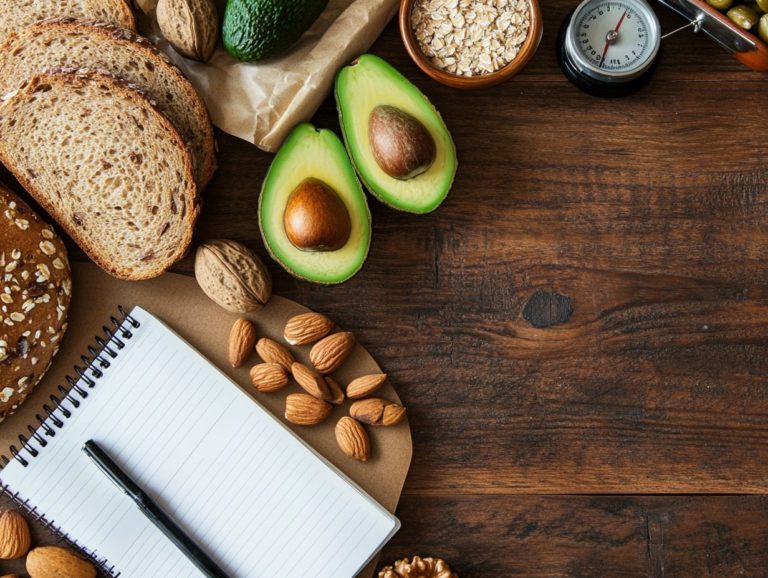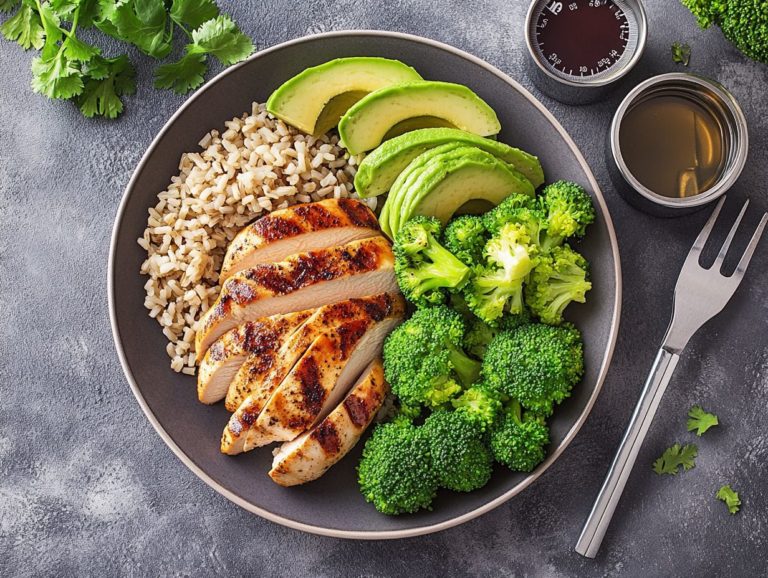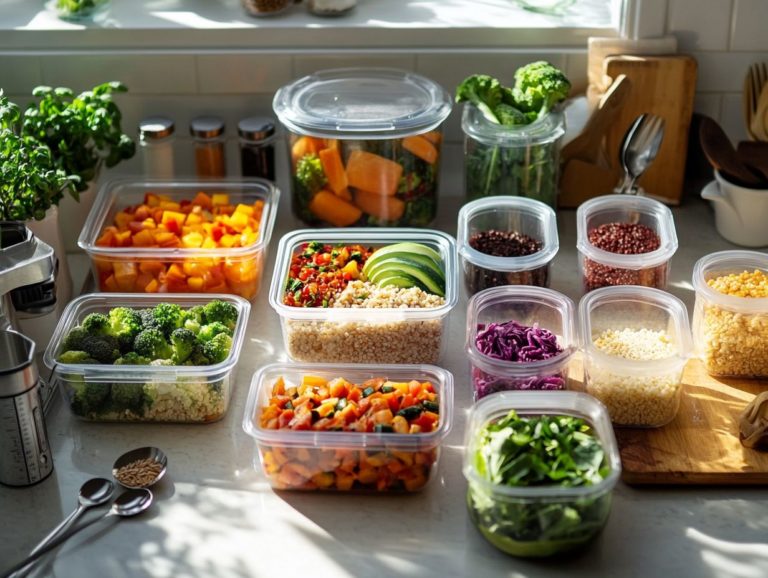How to Incorporate Superfoods into Your Meal Plan
Superfoods have surged in popularity, celebrated for their extraordinary nutritional benefits and potential to elevate your overall health!
But what exactly are these nutrient-rich foods? How can you seamlessly incorporate them into your diet? This article demystifies the concept of superfoods, outlines their health advantages, and provides practical tips for selecting and adding them to your meals.
You’ll also explore potential risks to consider, ensuring that you can fully enjoy the benefits of superfoods. Get ready to elevate your diet!
Contents
- Key Takeaways:
- What are Superfoods?
- Benefits of Incorporating Superfoods into Your Diet
- How to Choose and Buy Superfoods
- Ways to Incorporate Superfoods into Your Meal Plan
- Potential Risks and Precautions
- Frequently Asked Questions
- 1. How do I incorporate superfoods into my meal plan?
- 2. Can I incorporate superfoods into every meal?
- 3. How can I make my meals more colorful with superfoods?
- 4. Is it expensive to incorporate superfoods into my meal plan?
- 5. Can I incorporate superfoods into my picky eater’s meals?
- 6. Are there any superfoods that are easy to incorporate into meals?
Key Takeaways:
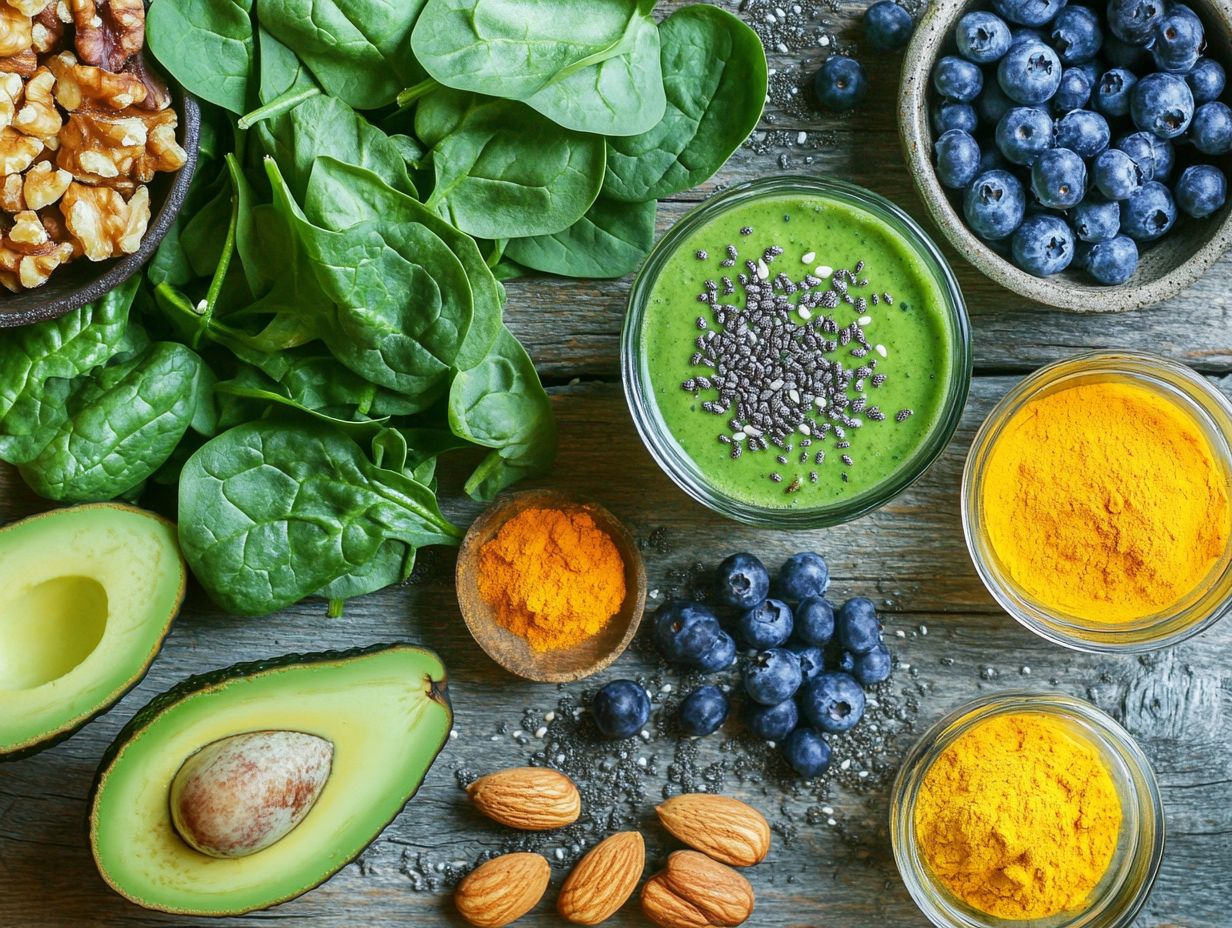
- Superfoods are nutrient-rich foods packed with health benefits!
- Including superfoods in your diet helps prevent diseases and improve overall health.
- When buying superfoods, choose fresh, organic, and locally sourced options for maximum nutritional value.
What are Superfoods?
Superfoods are nutrient-rich powerhouses that provide an abundance of health benefits. They range from disease prevention to better heart health and boosted immune function.
You ll recognize them by their impressive array of antioxidants, which are substances that help combat damage to your body’s cells, as well as vitamins and minerals. All of these play a vital role in promoting your overall health and wellness.
Foods like blueberries, kale, quinoa, and chia seeds are not just trendy; they are essentials in a balanced diet. You can effortlessly weave them into your meal plans, making them a key ingredient in cultivating a vibrant, healthy lifestyle.
Defining Superfoods and Their Nutritional Value
Superfoods are your ticket to exceptional nutrient density. They boast high levels of vitamins, minerals, and antioxidants that elevate your health and wellness to new heights!
Take kale and chia seeds, for example. These powerhouses offer essential nutrients that can significantly boost your immune system.
Kale is not just a leafy green; it s loaded with vitamin K, crucial for maintaining bone health and staving off osteoporosis. Plus, it s an excellent source of vitamins A and C, vital for keeping your skin and eyes in top shape.
Then there are chia seeds, which are bursting with omega-3 fatty acids, fiber, and protein. These ingredients work wonders for your heart health and digestion!
By adding these superfoods to your diet, you can effectively reduce your risk of chronic diseases like heart disease and diabetes, paving the way for your overall well-being.
Benefits of Incorporating Superfoods into Your Diet
Incorporating superfoods into your diet can yield remarkable health benefits. You may experience heightened energy levels, disease prevention, and enhanced heart health!
Foods like dark chocolate, Greek yogurt, and nuts are not only delectable but also brimming with antioxidants and healthy fats. These contribute to a balanced diet and overall wellness.
By weaving these nutrient-rich foods into your meals, you can attain better health outcomes while elevating your dining experience!
Health Benefits and Disease Prevention
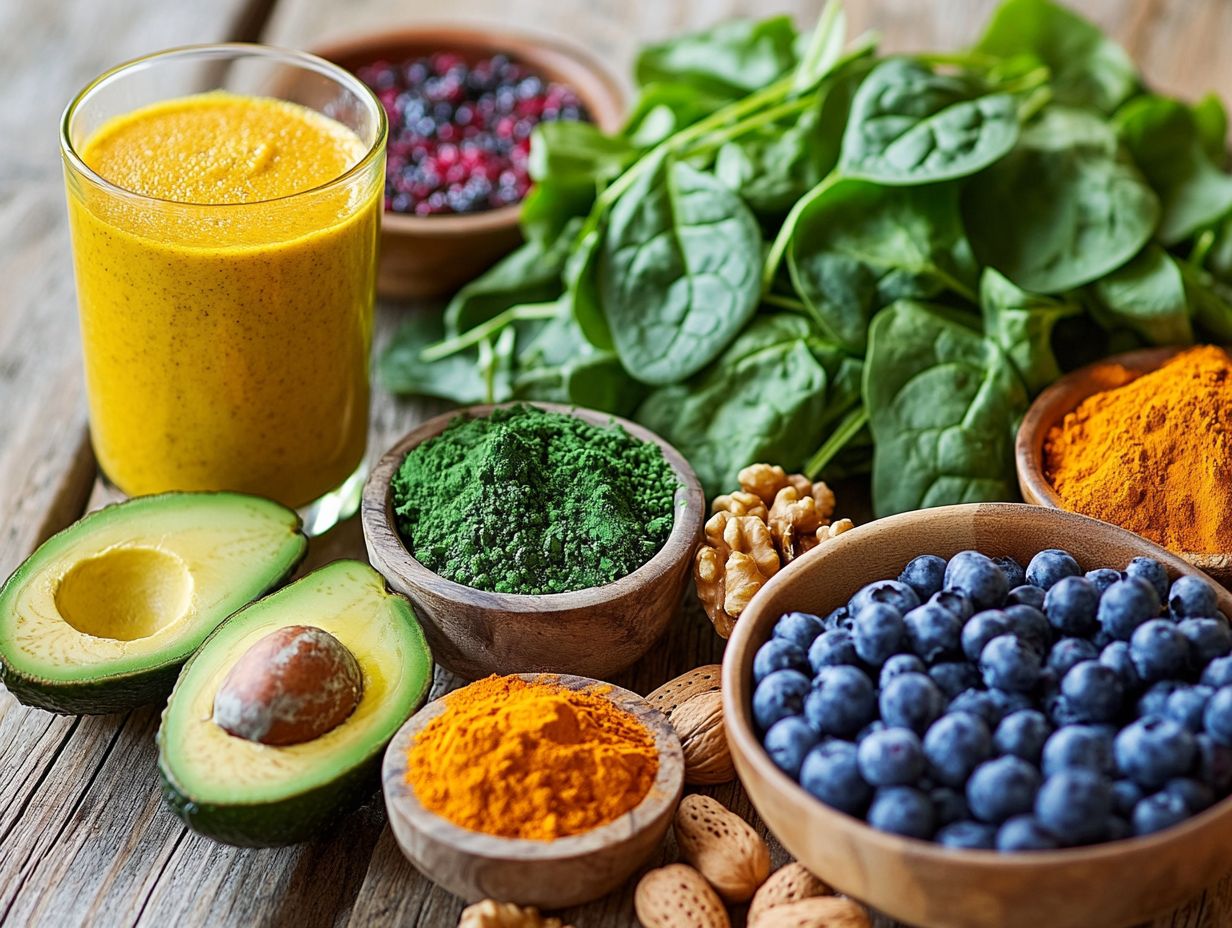
Incorporating superfoods into your diet brings an array of health benefits, including disease prevention and effective weight management. To enhance these benefits, learning how to pair superfoods for maximum benefit can be particularly useful.
These nutrient-rich foods are brimming with vitamins, minerals, and antioxidants that contribute significantly to your overall well-being.
Take berries, for example. Blueberries and strawberries are celebrated for their remarkable ability to reduce inflammation!
Thanks to their high levels of anthocyanins, they help combat oxidative stress in your body. Similarly, leafy greens like kale are a powerhouse of vitamins A, C, and K, promoting heart health by supporting healthy blood pressure and lowering cholesterol levels.
By incorporating these superfoods into your daily meals, you can elevate your nutritional intake and learn how to use superfoods for meal prep, reaping long-lasting health benefits that truly make a difference!
How to Choose and Buy Superfoods
Selecting and purchasing high-quality superfoods requires a discerning eye and some insight into what truly matters. By choosing whole foods that are minimally processed, you can maximize their nutritional benefits.
Look for superfoods like quinoa, kale, and berries that are fresh and vibrant. This vividness is a strong indicator of their nutrient density. Shopping at reputable stores known for quality, like Beyond Juicery + Eatery, can elevate your meal prep experience and transform it into something exceptional.
Tips for Selecting Quality Superfoods
When selecting superfoods, focus on freshness, vibrant colors, and reputable sources to ensure you’re getting top-tier, nutrient-dense products.
Consider purchasing from local farmers’ markets or co-ops where you can directly inquire about their growing practices. Monitor the seasonality of produce; items picked at their peak typically boast superior flavor and nutrient content.
As you evaluate packaged superfoods, look closely at the labels. Certifications like organic or non-GMO often indicate a higher quality standard. For example, quinoa with a certified organic label assures you it was cultivated without harmful pesticides.
Familiarize yourself with the ingredient list. The fewer the ingredients, the better. A short list often indicates a less processed product that retains its nutritional value, allowing you to make choices that truly benefit your health.
Ways to Incorporate Superfoods into Your Meal Plan
Incorporating superfoods into your meal plan is an exciting way to boost flavor and nutrition!
Imagine savoring smoothies brimming with luscious fruits like mango and strawberries or indulging in unique creations such as the Hummus + Beet Bowl or the Strawberry + Almond Bowl. The possibilities are endless.
By creatively weaving these nutrient-dense options into your meals, you not only enhance your dining experience, but also enjoy a wealth of health benefits.
Recipes and Meal Ideas
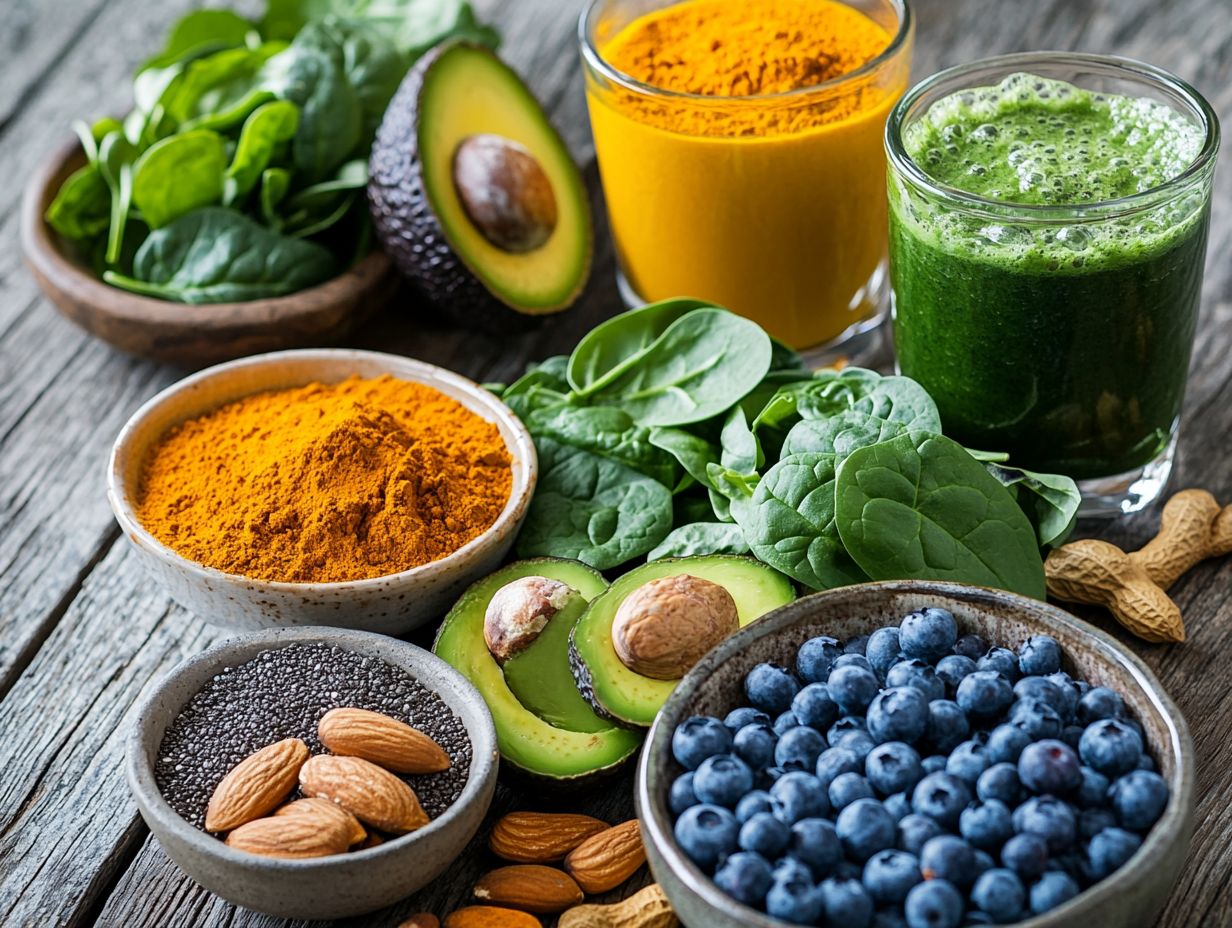
Creating a variety of recipes that incorporate superfoods enhances your nutrition and adds a delightful twist to your meals.
Include ingredients like kale, quinoa, chia seeds, and blueberries to transform everyday dishes into vibrant, health-packed creations. These versatile superfoods can be blended into smoothies for a quick breakfast or arranged in colorful bowls for a satisfying lunch.
Meal prepping with these ingredients opens the door to endless creative combinations, maximizing nutritional benefits while saving you time. Imagine a morning smoothie featuring spinach, banana, and almond milk or a nourishing grain bowl adorned with roasted sweet potatoes, creamy avocado, and a sprinkle of sprouts.
By experimenting with flavors and textures, you keep your palate intrigued while ensuring you receive essential vitamins and minerals in every meal.
Potential Risks and Precautions
While superfoods provide a wealth of health benefits, it’s crucial to be mindful of potential risks and precautions tied to their consumption, especially if you have specific health conditions.
For example, nuts are packed with healthy fats but can trigger allergic reactions for some. Not every superfood suits everyone’s dietary needs.
By understanding the anti-inflammatory properties of these foods, you can make informed choices that resonate with your health objectives.
Start incorporating superfoods today for a healthier, tastier tomorrow!
Considerations for Certain Health Conditions
Certain health conditions may require careful superfood consumption, especially for those with allergies or specific food limits.
If you re allergic to nuts, explore nut-free options like seeds or legumes. These choices deliver great nutrition without the risk of allergic reactions.
If gluten sensitivity is a concern, try grains like quinoa or amaranth. They are excellent substitutes for wheat-based products.
Understand how your health conditions interact with various superfoods. This knowledge helps you enjoy their nutritional benefits safely.
By recognizing your unique dietary needs, you can make informed choices and customize your superfood intake to support your health goals.
Frequently Asked Questions
1. How do I incorporate superfoods into my meal plan?

There are many ways to include superfoods in your meals. One easy method is to swap regular ingredients for superfood alternatives, like using quinoa instead of rice or preparing a superfood bowl by adding chia seeds to your morning smoothie.
2. Can I incorporate superfoods into every meal?
Yes, you can! Add berries to your oatmeal or avocado to your toast for breakfast. For lunch and dinner, use superfoods as toppings for salads or mix them into soups and stir-fries.
3. How can I make my meals more colorful with superfoods?
Superfoods come in various colors, making your meals vibrant. Add green spinach to smoothies, red bell peppers to stir-fries, and yellow turmeric to rice dishes.
4. Is it expensive to incorporate superfoods into my meal plan?
Incorporating superfoods into your diet can be affordable. Choose in-season and frozen options, and buy in bulk to save money while planning meals around what you have on hand, including the top superfoods for a plant-based diet.
5. Can I incorporate superfoods into my picky eater’s meals?
Absolutely! Get creative with presentation. Finely chop vegetables and blend them into sauces or use superfoods as toppings on their favorite meals.
6. Are there any superfoods that are easy to incorporate into meals?
Yes, many superfoods are easy to add to meals. Try using avocado, berries, kale, and sweet potatoes for a nutritious boost, and consider checking out this guide on how to make a superfood salad for some delicious ideas without changing the flavor much.

